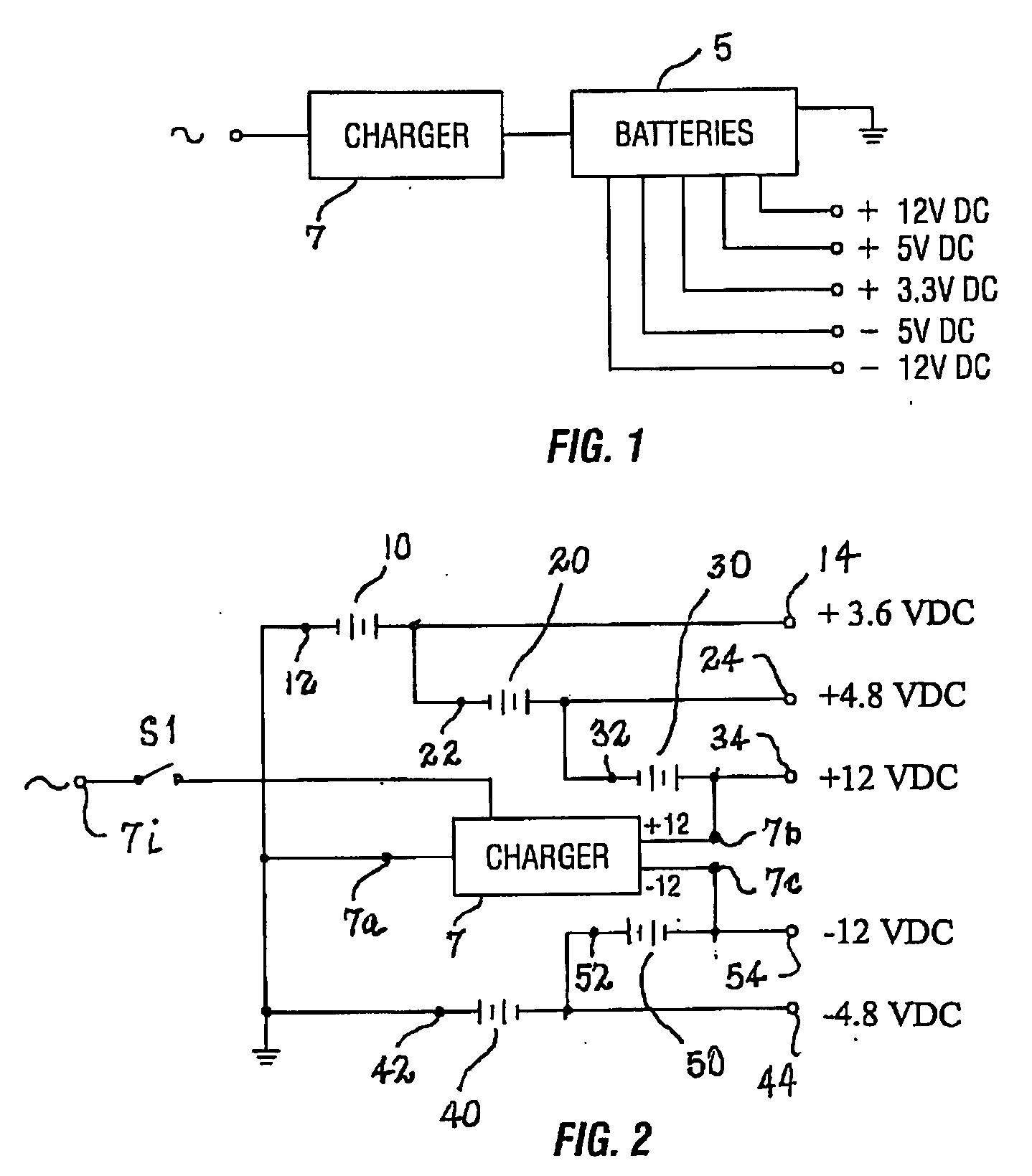Battery power supply
- Summary
- Abstract
- Description
- Claims
- Application Information
AI Technical Summary
Benefits of technology
Problems solved by technology
Method used
Image
Examples
Embodiment Construction
[0032]Before explaining the disclosed embodiment of the present invention in detail, it is to be understood that the invention is not limited in its application to the details of the particular arrangement shown since the invention is capable of other embodiments. Also, the terminology used herein is for the purpose of description and not of limitation.
[0033]The present invention is a battery power supply apparatus for operating an electronic device 3 such as a personal computer. A general diagram of the present invention is shown in FIG. 1 where we see a battery pack 5 having an arrangement of batteries which will be described in detail, plus a battery charger 7. Nominal DC voltages required for the operation of contemporary personal computers and other computer circuits are +12, +5, +3.3, −5 and −12 volts. It is noted that these voltages are nominal and therefore such circuits will operate satisfactorily when applied voltages vary from these values by up to plus and minus 20 perce...
PUM
 Login to View More
Login to View More Abstract
Description
Claims
Application Information
 Login to View More
Login to View More - R&D
- Intellectual Property
- Life Sciences
- Materials
- Tech Scout
- Unparalleled Data Quality
- Higher Quality Content
- 60% Fewer Hallucinations
Browse by: Latest US Patents, China's latest patents, Technical Efficacy Thesaurus, Application Domain, Technology Topic, Popular Technical Reports.
© 2025 PatSnap. All rights reserved.Legal|Privacy policy|Modern Slavery Act Transparency Statement|Sitemap|About US| Contact US: help@patsnap.com


